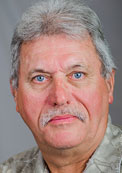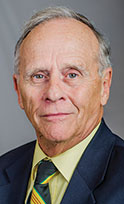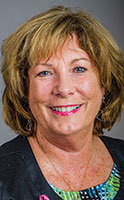 |
|||||||||
|
VVA Committee?Reports, January/February 2017 Agent Orange/Dioxin BY MAYNARD KADERLIK, CHAIR
I am so grateful to Mokie Porter for lighting the fuse on this issue years ago. We will continue to monitor the VA so that they do their job to implement the legislation properly. We will continue to do our Faces of Agent Orange town hall meetings all across the country to educate veterans and their families about what’s happened to their children and grandchildren and spread the word on the legislation that has passed. We also will try to get the Agent Orange Act of 1991 rejuvenated so more studies on veterans’ problems due to exposure to Agent Orange will be addressed. The road on this issue is long, but if we are willing to fight for our rights as veterans, we will win. We have won many battles through this great organization since its conception, and we will win more or die trying. I have had the pleasure to work on the Toxic Exposure Research Act with Sharon Hodge on Capitol Hill. I’ve often said, “I know we’re a pain in the ass here on the Hill, but we will be back until they put the last one of us down.” I believe they are finally seeing that we are true fighters for veterans’ rights. Homeless Veterans BY SANDY MILLER, CHAIR
There are so many VA programs for homeless veterans that I decided to list a few of them here with a very brief explanation about what each does. Community Resource and Referral Centers (CRRC): collaborative effort between the VA and community service providers. More than 32,000 veterans received services through CRRC in FY2015. Domiciliary Care for Homeless Veterans (DCHV): provides time-limited residential treatment to homeless veterans with mental health and substance-use disorders. Provides services to more than 7,500 veterans with more than 2,200 operational beds at 46 sites. Health Care for Homeless Veterans (HCHV): reduces homelessness by engaging and connecting homeless veterans to needed VA services. Provided services to more than 16,400 veterans. Homeless Providers Grant and Per Diem Program (GPD): allows grants to be awarded to community-based agencies to create transitional housing programs. This is the VA’s largest transitional housing program with more than 13,800 beds. Some 25,000 veterans were enrolled in GPD programs last year. More than 16,500 veterans were discharged into permanent housing. The average length of stay was 179 days, the briefest since 2009. Homeless Veterans Dental Program (HVDP): increases accessibility of quality dental care for homeless veterans. Some 16,600 veterans received dental care. Housing and Urban Development—Veterans Affairs Supportive Housing (HUD-VASH): 78,529 vouchers were allocated; 72,481 veterans were housed. Supportive Services for Veteran Families (SSVF): provides services to very-low-income veteran families in or transitioning into permanent housing based on the rapid re-housing model. About 95,000 veterans were assisted. Some 12,700 (13 percent) were female.
California and Florida have the highest number of homeless veterans, with Texas and New York following close behind. Between 2009 and 2016 Colorado had the largest increase in homeless veterans, rising by 24 percent. Nationally, homelessness among veterans dropped by 46 percent between 2009 and 2016. Between 2015 and 2016 homelessness increased in eight states and decreased in forty-two states and the District of Columbia. The Homeless Veterans Committee looks forward to the new year, hoping we can make a difference in the lives of the less fortunate. PTSD and Substance Abuse BY THOMAS C. HALL, Ph.D., chair
We know that all warriors experience the same discomforts between recent experiences of military and war and the realities of returning home. For some this smooths out over time. Research shows that for others, though, neurological changes can be so jarring that time alone will not heal. The struggle to reconcile the conflicting emotional, psychological, and physical realities of returning home intrudes on the process of coming all the way home. You are outwardly the same person, yet inwardly you’re not the same person who deployed to a combat zone. Occasionally, a film comes along that captures glimpses of the chaos and struggle that PTSD can have upon veterans returning home. On November 10, I was privileged to attend the New York premier and participate in a panel discussion following the new film, Man Down, in which actor Shia LeBeouf portrays a recent war veteran struggling with guilt, shame, anger, and betrayal. This is a Hollywood movie with the experiences of many veterans compressed into what happens to a single veteran. However, the film does shine a light on how PTSD can create the all-too-familiar psychological chaos that can damage relationships with loved ones. Alienation often leads to homelessness for returning veterans, leaving in its wake shattered and broken families. Both the veteran going through this emotional and psychological minefield and his or her family and friends deserve all our resources in navigating this difficult reintegration process. The film leaves little doubt that family members go through PTSD with their loved ones. In working with AVVA, the PTSD/SA Committee is searching for ways to help families realize they are not crazy, alone, or at fault. Family members need support with their own struggles to stabilize and understand their own issues. We hope that families will never know war, so understanding what the veteran went through is not the goal. Rather, we can help family members understand what they can do to take care of themselves while working to understand and support their veterans. AVVA and the PTSD/SA Committee are collaborating to fight for policies that ensure such resources as peer-led social support and clinical help are available to veterans and their families. The committee wants veterans to come back to more than a family caught in cycles of anger, fear, blame, and hurt. Treating veterans and sending them back to families still confused and in chaos risks undoing any progress a veteran has made in treatment. Unique emotional, psychological, and physical obstacles faced each of us returning from Vietnam. The difficulty of reconciling lived experiences with the apparent safety of returning home for a person still ready for combat, with the family caught in the middle, is not unfamiliar. The committee believes these efforts are in line with VVA’s founding principle, “Never again will one generation of veterans abandon another.” We won’t. Public Affairs BY DENNIS HOWLAND, CHAIR
There are so many programs that your state council and chapter can be involved in to advance your efforts and Vietnam Veterans of America. They are there for the asking and nearly every community organization will welcome your ideas, your energies, and your time. The impact of good community relations is often immeasurable. But the pay-off is worth the effort. Community support of fundraisers, coverage in the media, and support of attempts at positive legislative results can all result from involvement in your community. I have received emails from members who say, “But my community, the veterans’ community, or just plain people, don’t know we are here.” My answer is, “Whose fault is that?” At the risk of repeating myself: If your media and your community, especially veterans, don’t know you exist, it is your fault. It is your responsibility. Here are some of my chapter’s activities in 2016:
These are just a few of our 2016 events. Each brought great coverage from print and broadcast media and good public attendance. Each activity involved community leaders and elected officials. The expense was a couple of bucks, community support of materials and services, and the time spent by our members to shed a brilliant light on our organization. Members still had time to go back to the community and ask for assistance in raising funds for our Vietnam Memorial Wall Project and veterans programs. You might be able to increase your visibility in the community and show you served your country and now serve your communities. Everyone begins to know that VVA is part of their town. Send information about your activities to dennishowland @msn.com Women Veterans BY KATE O’HARE-PALMER, CHAIR
McClellan has been known for years to hold deadly little secrets. Retired Col. Judy Carrol wrote an exhaustive research paper on this after her own exposure to toxic materials. Several VVA members who were stationed there suffer from illnesses, too. The VA has been staunchly opposed to granting service-connected compensation for any illnesses related to service there. Fort McClellan opened its doors in 1917. During World War II, it was one of the largest U.S. Army installations, training an estimated half million troops. After the war and until it was closed in 1999, Fort McClellan was home to about ten thousand military personnel, half of whom were permanently assigned, many with families. The fort employed about fifteen hundred civilians. From 1929-71 a Monsanto chemical plant operating just south of McClellan in Anniston released polychlorinated biphenyls (PCBs) into “the environment, and the surrounding community was exposed,” according to the VA. publichealth.va.gov/ exposures/fort-mcclellan/#sthash. r0iPj8XL.dpuf In 2009 CBS’s 60 Minutes called Anniston “America’s most toxic town,” with residents exposed to nuclear, biological, and chemical toxins. Many unexplained medical problems and serious health conditions have been documented, including cancer, endocrine disorders, fertility disorders, autoimmune diseases, neurological problems, and diabetes. When Fort McClellan was closed in 1999 under the Base Realignment and Closure Act, the Environmental Protection Agency became actively involved. McClellan was declared a toxic site and federally mandated to be decontaminated. The EPA included Fort McClellan in its Superfund Program. epa.gov/superfund/about.html There were four main sources of toxic exposure: Defoliant product by Solutia, a multinational agrochemical and agricultural biotechnology corporation that produced Agent Orange and other Rainbow herbicides—and its toxic byproduct, dioxin. PCBs Products such as electrical insular materials, plastics, capacitors, transformer oils, and heat transfer fluids in closed systems, were dumped by Monsanto into landfills and the water around this base or released into the air, the CDC reported. Nuclear, biological, and chemical weapons, some dating back to the First World War, were stored at Fort McClellan. Army Depot of Anniston provided munitions storage and refurbishment, testing, and decommissioning of combat vehicles and ordnance. These operations produced contaminated soil and groundwater from the solid and liquid wastes that were created and dumped. H.R.411, the Ft. McClellan Health Registry Act of 2013-14, was referred to a House subcommittee and never reemerged. This was supposed to set up a registry of those who served on the base and became sick. It was a beginning. There has been renewed hope, though, with the positive outcome of Richard Barbett’s appeal for VA disability benefits for Parkinson’s disease. The reviewing court said the “entire evidence is left with the definite and firm conviction that a mistake has been committed.” Barbett had established herbicide exposure in service while stationed at McClellan and was granted service-connection compensation. The VA encourages those who have health issues that may be associated with their service at Fort McClellan to see a physician or an environmental health coordinator. Veterans may file a claim for disability compensation; those claims are decided on a case-by-case basis. It is up to each woman veteran who served at McClellan and suffers from these illnesses to submit a claim through her service officer. Denial is not defeat; it is just another rung that must be climbed to gain just compensation. Thanks to Billie Culin, one of our great VVA former Board members and current Arizona chapter and state officer, for her tireless efforts on behalf of the women who served at Fort McClellan. |
|||||||||
|
|
|||||||||
The Military Working Dog Commemorative Stamp Drive needs your help. |
|||||||||
8719 Colesville Road, Suite 100, Silver Spring. MD 20910 | www.vva.org | contact us |
|||||||||





















 Well, we did it! Our persistent team all over this country did a great job in every way possible. Also, I for one believe the Lord was with us the whole distance. In case you haven’t a clue what I’m talking about, it’s the passage of S.901. I would not—and did not—give up because it came home for me in my children and grandchildren.
Well, we did it! Our persistent team all over this country did a great job in every way possible. Also, I for one believe the Lord was with us the whole distance. In case you haven’t a clue what I’m talking about, it’s the passage of S.901. I would not—and did not—give up because it came home for me in my children and grandchildren. Significant progress has been made to prevent and end veteran homelessness. There has been a nearly 50 percent decrease since 2010. The recently released Annual Homeless Assessment Report indicates that as of the 2016 Point-In-Time Count, there were fewer than 40,000 homeless veterans. Of those, approximately 13,000 were “unsheltered” or on the streets. The Point-In-Time Count takes place on one day in January every year. According to this report, there was a 17 percent drop in the number of homeless veterans from the 2015 numbers.
Significant progress has been made to prevent and end veteran homelessness. There has been a nearly 50 percent decrease since 2010. The recently released Annual Homeless Assessment Report indicates that as of the 2016 Point-In-Time Count, there were fewer than 40,000 homeless veterans. Of those, approximately 13,000 were “unsheltered” or on the streets. The Point-In-Time Count takes place on one day in January every year. According to this report, there was a 17 percent drop in the number of homeless veterans from the 2015 numbers. The PTSD/SA Committee continues to look for ways to help our brothers and sisters come all the way home. Returning from World War II, Korea, Vietnam, Iraq, Afghanistan, or from any other conflict around the globe, was and is not easy. The committee is always seeking ways to help ease veterans back into the civilian world.
The PTSD/SA Committee continues to look for ways to help our brothers and sisters come all the way home. Returning from World War II, Korea, Vietnam, Iraq, Afghanistan, or from any other conflict around the globe, was and is not easy. The committee is always seeking ways to help ease veterans back into the civilian world. As we move into a new year I can’t stress enough the importance of a continued sound and professional public affairs program. I believe it is truly a big portion of our meat and ’taters when it comes to community acceptance, support of our legislative endeavors, and our recruitment success.
As we move into a new year I can’t stress enough the importance of a continued sound and professional public affairs program. I believe it is truly a big portion of our meat and ’taters when it comes to community acceptance, support of our legislative endeavors, and our recruitment success. Located adjacent to Anniston, Ala., and contiguous with the Anniston Army Depot, Fort McClellan—which closed in 1999—was the home of the Women’s Army Corps, the Military Police Corps, the Chemical Corps School, and an infantry battalion, along with a variety of medical, logistical, and administrative support personnel.
Located adjacent to Anniston, Ala., and contiguous with the Anniston Army Depot, Fort McClellan—which closed in 1999—was the home of the Women’s Army Corps, the Military Police Corps, the Chemical Corps School, and an infantry battalion, along with a variety of medical, logistical, and administrative support personnel.